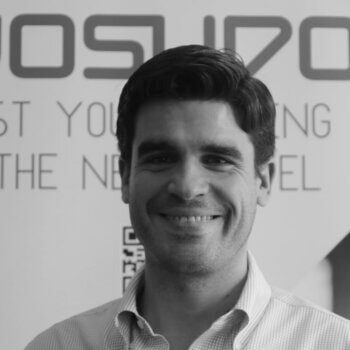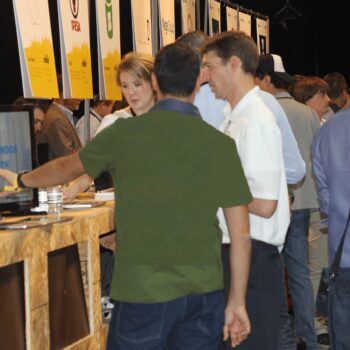(Women on Top in Tech is a series about Women Founders, CEOs, and Leaders in technology. It aims to amplify and bring to the fore diversity in leadership in technology.)
Here is our interview with Chandni Rajendran, Founder of Tactopus. It is an inclusive educational platform for children with visual impairment. She builds interactive tactile graphics and tangible learning solutions that break barriers in access to education for blind children.
What makes you do what you do?
I’m an interaction designer, I design technology to make it work well for people. HCI (human computer interaction) design involves understanding human needs and finding ways to address them with constantly evolving technology that’s been made available to us. I definitely enjoy being in this cusp of design and digital technology, where being empathetic, sensitive, creative, and observant are big strengths. I’m currently working in education, creating inclusive, interactive learning experiences for children with special needs.
How did you rise in the industry you are in?
I did my Masters in Interaction Design at IDC, Indian Institute of Technology. As a student, I’d always be looking for opportunities to connect with people of different points of view, experiences, and fields. I’d participate in design competitions and conferences, where I had the opportunity to present my work to diverse audiences. Learning to communicate design ideas to a broad audience has proven to be an important asset. Design communication is a very important skill, and I think it was honed considerably during my masters program. Looking back, another skill I seemed to have picked up, is going for it before I was ready for something, and it has been quite rewarding.
Why did you take on this role/start this startup especially since this is perhaps a stretch or challenge for you (or viewed as one since you are not the usual leadership demographics)?
My entrepreneurial journey has been a spin-off from my academic work. My masters project was to develop a cost effective way to add audio labels to tactile graphics. A little before that, I briefly designed tactile graphics for blind school children, and I was very unhappy with the limitations in tactile communication. That led me to develop the technology to provide live audio labels to tactile material. While testing it with users and speaking with mentors at XRCVC (Xaviers’ Resource Centre for the Visually Challenged, Mumbai), I realized it was an important solution that could make a real difference. So I decided to give it the time to see how it could become a business and reach the users who need it.
The first, and most rewarding recognition for my work was when a 12 year old user eagerly asked when the game would be ready so he could take it home and play. Shortly after that, I received the Young Innovator Award from the Chief Minister of Maharashtra, Devendra Fadnavis, which was very encouraging at an early stage. There is now a very nurturing environment for startups in India, especially in Mumbai and Bangalore. There has been a lot of conversation about entrepreneurship, resources, and supporting organizations. Even before I graduated, I received grants from my university and the government to prototype the technology. That helped me get started and reach a few partner schools.
Do you have a mentor that you look up to in your industries or did you look for one or how did that work? How did you make a match if you did, and how did you end up being mentored by him/her?
I have reached out to many people I look up to for different reasons- entrepreneurs in similar fields, industry leaders, and academics. I have benefitted from long conversations and helpful advice from them and I continue to keep them updated about my progress. Most people are approachable and are easy to speak with, especially when you have an exciting idea that you want feedback or guidance on.
I was part of EmpoWer, an accelerator for women, with 14 other women entrepreneurs, a few of whom are further ahead in their entrepreneurial journey, a few who’ve had decades of experience working in the tech industry. I’m also connected with a team of inspiring social entrepreneurs at India Inclusion Summit, who know my work closely and are able to point me in the right direction when I need it. So I’ve come to develop a network of resourceful and helpful individuals whom I can bank on for guidance.
Now as a leader how do you spot, develop, keep, grow and support your talent?
I myself learned a lot from my first internship with Mr. Bijoy Ramachandran’s office, an architecture practice based in Bangalore. I learnt very important lessons early on, in design, work ethic, and discipline in quality of work. Though I do nothing related to architecture now, I believe the practices I picked up then still help me do good work. As much as possible, I try to do the same for anybody who works with me. It’s not just about getting work done at the office, but making sure there’s a meaningful learning for interns who join the team.
Do you consciously or unconsciously support diversity and why?
My startup is all about diversity. It’s about enabling people with disabilities to participate equally in social learning scenarios. It enables schools to be inclusive and support children with special needs. It’s about bridging those gaps that might seem small at the moment, but often snowball into significant barriers to opportunity as a child grows up. Having access to the right tools is very important, and we’re creating those empowering resources. One of the design challenges we’ve had is designed for everybody- making the products appealing for all children, and not just as assistive technology for a few. Social inclusion is as important as having access to information and opportunities.
What is your take on what it takes to be a great leader in your industry and as a general rule of thumb?
As a designer, one should constantly be reimagining how things can be better around them. Design as a process or tool can be applied to anything “from a spoon to a city,” as famously stated by Ernesto Rogers. There are enough problems in the world to find creative solutions for, and if one looks carefully, there are opportunities for good design everywhere. All the designers I admire have done precisely that- went beyond the usual, found interesting opportunities, and created meaningful design solutions.
Advice for others?
It’s an exciting time to be an entrepreneur (or work with a startup) in India, with an incredible amount of support from the government and the startup community. I’ll repeat what I once heard – seize the day. While on the one hand, investors may be looking for the next unicorn, but there are many startups and social enterprises that may never reach those lofty numbers, but serve very important roles and impact people’s lives positively. I’m sure it’ll be a rewarding journey when an organization’s key success metrics include social impact.
If you’d like to get in touch with Chandni Rajendran, please feel free to reach out to her on LinkedIn: https://www.linkedin.com/in/chaandni/
To learn more about Tactopus, please click here.





























